Our workshop is located in "Unit K1" of the Hadrian Enterprise Park, the former paint works in Haltwhistle. There is a connection here; perhaps the world's first narrow gauge Beyer, Garratt articulated locomotive (built in 1909 - the same year as the "William Riley" lifeboat), which had been restored and was running on the WHR, also answers to "K1", and the sight of the un-restored loco in the 1960s, at Porthmadog, and later at NRM, York, are good memories for Ian, made more pleasant by the locomotive's recent rebirth.
Originally we were in the small workshop next door. However, when we needed more space we expanded into our current, larger workshop, which was leased in November 2009 as a bare shell. The workshop has now been equipped with an extensive range of machinery, traditional hand and modern power tools. Lighting, power points and dust extraction equipment have also been installed. A small number of further improvements remain to be made in the near future, including some additional equipment. This has gone full circle, as during 2017, the need for yet more space saw us take up the option to lease the original workshop and combine the two into one.
Above - Exterior of the workshop. Top Right - looking across to the main assembly
area, Middle Right - View down the assembly area. Lower
right - looking into the main machinery area, the works
office is in the far corner. Below - Interior of the works office
image gallery - Stanegate Restorations - workshop
and facilities.
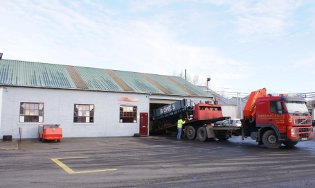
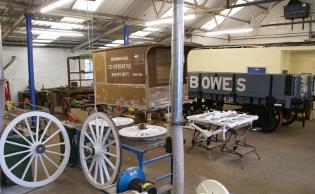
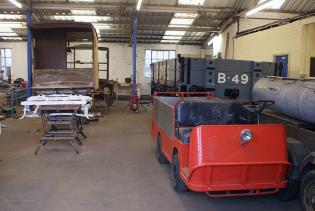
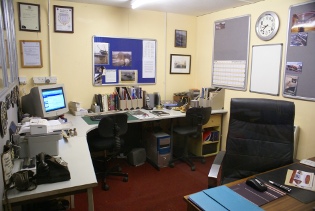
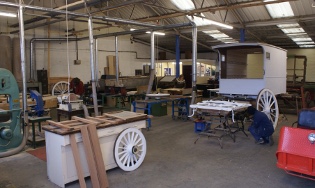
Machinery includes all the normal larger kit - circular saw, planner / thicknesser, band-saw, spindle molder, mortiser, and lathe. The power tools include the usual suspects - drills, routers, and crosscut saws. The large number of traditional hand tools range from wood-turning gouges up to large pattern makers planes. (I was told not to mention the collection of wooden handled torque wrenches, ie rubber hammers and mallets). Ian is a firm believer in the adage that you can never have enough clamps!! There must be about fifty altogether of various sizes and designs. Since most of them were in use during the construction of the WHHR carriage underframes, and the roof sticks, the point is well taken.
There is a large area set aside for work on our larger projects, such as carriage assembly and painting, as well as areas of bench space for working on smaller tasks like jig and model making.
Access by road is very easy since the new roundabout was inserted into the A69 (opened in March 2009); long loads no longer have to negotiate a narrow and low bridge under the Newcastle-Carlisle Railway line.
Since much of our work is reducing large pieces of timber down to finished sizes, this creates quite a significant amount of sawdust and shavings, as well as off-cuts. This might have been a disposal nightmare, but we have a solution! Shavings suitable for pets and wildlife bedding are supplied to friends and family (donations to RNLI in lieu have been accepted), the sawdust is stored to use as fuel in a special stove (providing carbon neutral heating - which saves on electricity heating costs, as well as being excellent at boiling up water for coffee break, and the ash is added to a compost heap which in turn feeds an allotment), and some of the off-cuts have been used to construct items such as bird boxes, put up at home and well used, and not just by the local birds!! Another use for off-cuts - after suitable finishing - has been as toy / building blocks for very young relatives......
Stanegate Restorations and Replicas has a wide range of both tools and equipment enabling us to take on most types of restoration. We will be extending this page to provide pictures of our equipment in use and illustrating the way old and unsafe wood can be removed and replaced while retaining as much of the good timber as possible, thereby restoring the strength.
Here is a sequence of illustrating repairs and replacements as used on the WHR Buffet Car (by the way, these shots are not all of the same joints!)
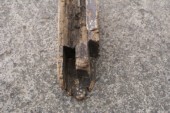 |
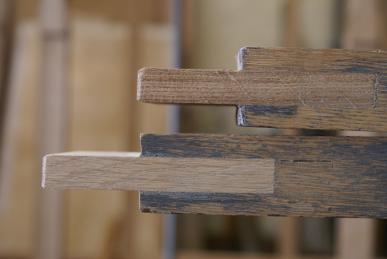 |
|
| A joint well past its best! | tennons replaced | grafts are lighter wood |
| These repair methods are much easier with the strength of modern glues, we carried out, and photographed, a test to show this. | ||
| Glue test - images | ||
|
copyright - SRR / SjS 2006 - 2019 |